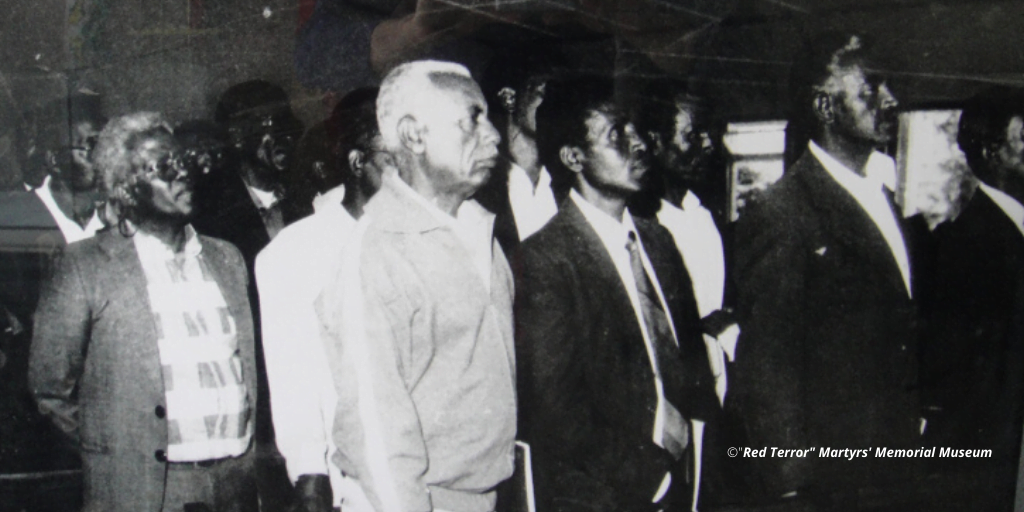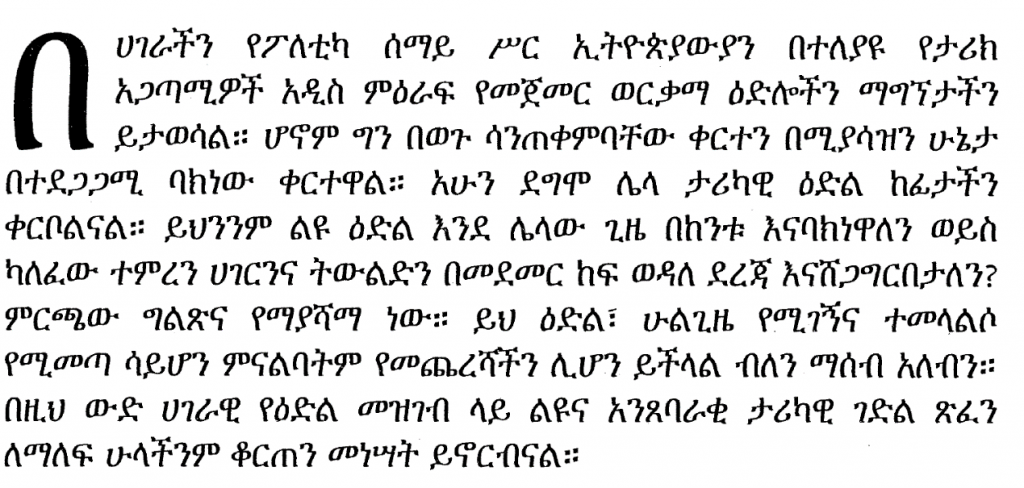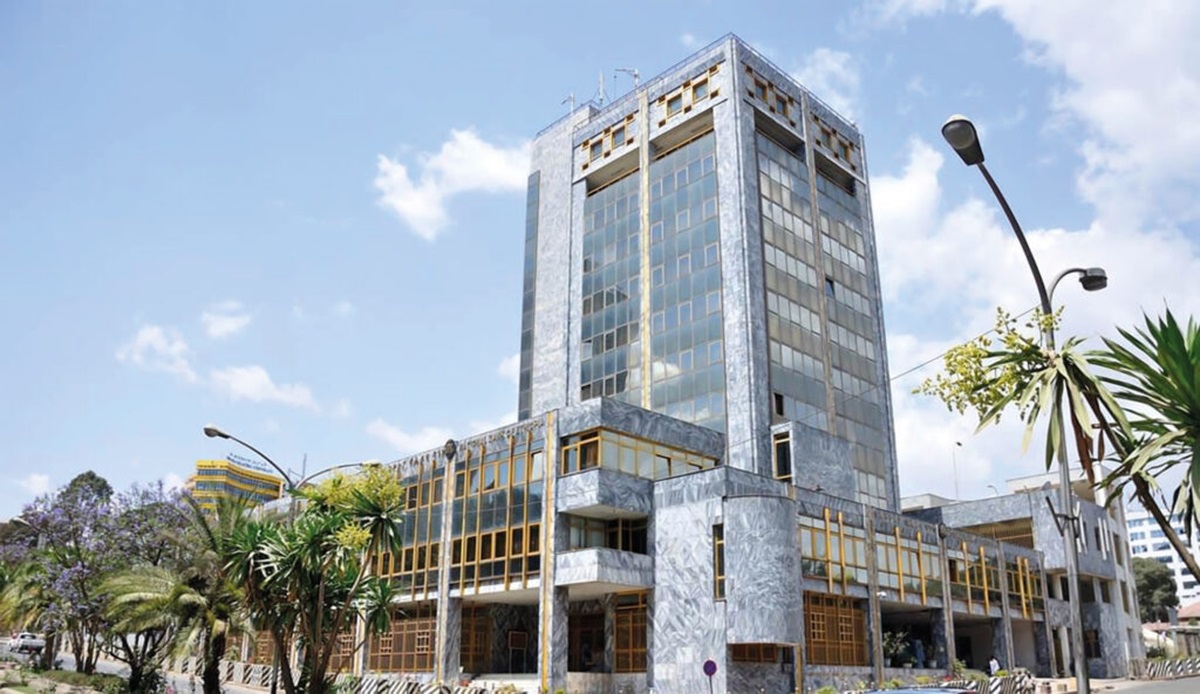Commentary: Of transitional justice: Ethiopia’s opportune moment to learn from its past failed attempt

Belachew Mekuria, PhD, For Addis Standard
Addis Abeba, November 27/2019 – The domestic trial processes Ethiopia had conducted following the downfall of the Derg regime had failed to have the effect of creating lasting peace and restoring victims’ losses, instead were regarded mere expressions of victors’ justice. The post-Cold War period saw a winding up of most of the proxy civil wars in Africa and elsewhere.
In Ethiopia too it had brought an end a two-decade old civil war waged against the Derg that ruled the country for 17 years by military fiat and with no legitimacy backed by a democratic constitution. In mid-1991 a consortium of insurgency groups consolidated itself as a transitional government till the drafting and promulgation of a constitution that would enable it establish a federal state system whose legitimacy in due time was decidedly questioned, both in one of the open elections it had risked to organize with relatively freer democratic space as well as through various revolutions up until its downfall in 2018.
One fundamental purpose for the establishment of the transitional government was the creation of ‘peace and stability [which] require the end of hostilities [and] the healing of wounds caused by conflicts.’ It was the formation of the Special Prosecutor’s Office (SPO) for the trial of the former political cadres that seemingly created a sense of hope for a new chapter of accountability, though that sense was to a large extent limited to the urban population having access to information to what was going on within the judicial institutions. After 15 years of delayed rendition by the courts the trials had ended in 2009 with less transparency, public debate and no efforts to ‘heal the wounds’ suffered by the victims.
Ethiopia is once again in that moment of transition and what we directly do to come to terms with our past will determine our ability to sustain peace. In none of his speeches has, the Nobel Peace Laureate PM Abiy, come closer to engaging with the idea of transitional justice as he did in his 3 November 2019 message. He explained at length what forgiveness and making peace means in a manner that befits a Nobel Peace Prize Laureate. A call for a sincere search for truth and reconciliation was made repeatedly in that speech, including the Medemer book which was launched recently. This contribution is a repeat of the similar calls made over and over again, particularly considering the horrendous acts of these past few months that once again forced red tears out of many Ethiopians eyes.
A note on our failed attempt in the past
As ‘war’ and ‘peace’ are relative terms, so also are conflict and post-conflict situations. Getting this fluidity right or simply as Michael Doyle and Nicholas Sambanis put it understanding ‘peace to be a spectrum ranging from insecure to secure’ state of affairs is relevant to grasp the dynamics involved in post-conflict reconstruction. This lofty task could be undertaken either with the presence of a multi-functional international operation like the UN peacebuilding missions for the verification of implementation of the negotiated peace settlement or without it. Ethiopia’s post-conflict state-building, transitional justice and generally re-instituting the state apparatus has been largely carried out without the presence of any peace operations following the downfall of the Derg.
Post-conflict reconstruction embraces a wide array of measures that aim at re-instituting legitimacy of the government and its institutions, the promotion of political participation and human rights, the increase in effectiveness in the provision of public goods and ensuring a sustained economic recovery. All these measures play a role in the creation of sustainable peace only where demands for justice are also addressed with similar vigor and subtlety. The formal ending of armed conflicts and the prevalence of semblance of peaceful conditions do not necessarily bring those involved – both directly and indirectly – in hostilities to terms with their past. As noted by David Chuter, in reference to Khmer Rouge of Cambodia and the former Yugoslavia, ‘trying to deal with the consequences of such crises without dealing with their causes will not achieve very much.’ It is hardly possible to assume that victims of major human rights violations would easily forget the past and covering it ‘without some form of accounting, some semblance of justice, is to leave in place the seeds of future conflict’ (Kritz, 1996, p 127).
A historical example that demonstrates the importance of addressing justice issues is how the end of the Second World War (WWII) was sealed by the establishment of the Nuremberg and Tokyo Tribunals in 1944 to try and convict those individuals responsible for war crimes and crimes against peace. This monumental event was then followed by the adoption of the Universal Declaration of Human Rights (UDHR) in 1948, a day after the adoption of the UN genocide Convention. Both these events highlight the thinking that prevailed at that time underscoring the need for building a future peace based on the supremacy of the rule of law and holding those responsible for human rights violations to individually account and establishing the foundations for future respect of human rights. The UDHR was adopted, among others, because ‘it is essential, if man is not to be compelled to have recourse, as a last resort, to rebellion against tyranny and oppression, that human rights should be protected by the rule of law.’ This is what we read in Para 3 of the Declaration.
The peculiarities of the periods and the context notwithstanding, these global events inform the contents of post-conflict reconstruction measures in those states that emerge from prolonged conflict and the need to address the questions of impunity and promote human rights. Peacebuilding and post-conflict reconstruction should, if ‘lasting peace and stability’ is to be achieved, try to strike a fair balance between the immediate needs to stabilize the state and the long-term ‘objectives relating to the promotion of justice…and building institutions’ (Mats Berdal, Ending Wars, 2010 p9). Furthermore, if the long-term goals of institution building in post-conflict reconstruction environment and revolutionary transitions aspire for the entrenchment of the rule of law, it must address, among others, past human rights violations and tackle impunity.
Ethiopia had been in a constant state of unrest, civil wars and famine-that once shocked the conscience of the international community and for the first time created the ‘Band-Aid’ movement. Sadly, the famines that frequently hit Ethiopia, including the great famines of 1983-85 were largely attributed to ill-conceived government policies, in particular counter insurgency strategies. The internal conflict covered almost the whole period of the Cold War which started at the time of Eritrean federation with Ethiopia was dissolved by Emperor Haile Silassie I in 1962. The federation was established by the United Nations General Assembly’s decision of 2 Dec 1950 that later on was enacted as law by the 1952 ACT that declared the incorporation of Eritrea, which was from the 1880s until the end of WWII was the colony of Italy, as one autonomous unit federated with Ethiopia under the sovereignty of the Ethiopian Crown. When the Emperor of Ethiopia later decided to dissolve the federation it was rather considered as annexation of Eritrea by Ethiopia leading to the outbreak of an active war of liberation in 1962.
The worst atrocities had happened between 1977 and the first half of 1980, during which period ‘some 1.5 million Ethiopians are estimated to have died, disappeared or killed as later uncovered during the trials through witness testimonies and upon exhumation of several mass graves’ (Firew Tiba, ‘The Mengistu genocide trial in Ethiopia’). These death tolls were results of combinations of factors including the 1983-5 famine, forced relocation/resettlement programs as well as mass killings under the ‘red terror’ campaign of the military government. The 1985 famine worked rather to the benefits of the liberation movements as it had highly tarnished the government’s credibility as it failed to protect its people from the effects of the recurring famine that had once again come back exactly after 10 years.
The transitional government, when it assumed power in 1991, had made it clear that it would bring the perpetrators under the former regime to justice based on the domestic criminal law and procedure and with that resolve carried out a massive arrest in the same year and established the SPO in 1992. The justification of the overall process was clarified under its establishment proclamation in the following words:
“…heinous and horrendous criminal acts which occupy a special chapter in the history of the peoples of Ethiopia have been perpetrated against the people of Ethiopia by officials, members and auxiliaries of the security and armed forces of the Derg [and] it is in the interest of a just historical obligation to record for posterity the brutal offenses…to educate the people and make them aware of these offenses in order to prevent the recurrence of such a system of government.” (Proclamation 22/1992, Preamble, paras 2&5).
The ultimate purposes of the proceedings as can be observed from this provision was solely to educate and prevent-in terms of deterring the recurrence of same system of governance. No doubt that in incarcerating the perpetrators, the society is expressing its outrage against the horrendous acts they had committed and taking retributive measures. But the law emphasizes rather the greater good which is the ultimate goal of educating the people-directed both to the present and for posterity.
The SPO had charged thousands of high and low-ranking officials for crimes of genocide, crimes against humanity and homicide in the first degree. Many of them charged and convicted in absentia, including the main perpetrator Colonel Mengistu Hailemariam. This was by far a process that had come closer to a transitional justice initiative even though it missed the point by relying solely on the judicial process and by exclusively looking at the immediate predecessor government’s wrongs. The political discourse however covered generational relations that, in various occasions, been referred to as unjust, oppressive and highly divisive in ethnic terms. Ethnic federalism was, therefore, preached as a panacea to all those wrong turns in history. Through the self-government and amplified ethnic marks over the Ethiopian identity, we are told, would put the country on course for a better future. Significant effort had gone into deepening those differences in a manner that looked like we are promoting diversity more than our unified and ‘glorious past.’ Paradoxically, after close to thirty years of experimentation, we are yet again told that our only path is to strengthen our unity under the philosophy of Medemer to the dismay of some who categorically deny any glory in Ethiopia’s unified past.
Ethiopia at crossroads again
Following the emergence of Abiy Ahmed as victorious going through the conglomerate’s internal struggle after the resignation of Hailemariam Dessalegn, the country has entered into a new era in the economic, political and social fronts. We have come a long way in just a short period of time that put us en-route towards the awakening of democracy, free speech and respect for human rights. The state ownership of key industries (Ethio-telecom, the Ethiopian airlines, the power company) has burdened the economy to a point of full bankruptcy, and the Premier’s privatization initiative is expected to eventually reduce this ailment. What however remains wanting is a transitional justice process which Ethiopia has for long denied itself and become a constant land of contending claims of victimhood. The country continues to struggle with various claims of ethnic oppression and injustices for which the crafters of the 1994 constitution believed they have found a resolution through the adoption of the current federal arrangement. This political document underscores in its Preamble the need to be ‘fully cognizant that our common destiny can best be served by rectifying historically unjust relationships and by further promoting our shared interests.’
The reference to ‘rectifying historically unjust relationships’ remains a mere declaration without concrete action to reset the bitter and historically grievance-ridden relations. During previous power transfers, be it during the era of Haileselassie, the Derg or when the coalition of ethnic based parties ascended to power in 1994, at no time in history Ethiopia has had the courage to do genuine reconciliation processes. The need for transitional justice that aims at resetting social relations on the basis of fundamental principles of justice and with a view to charting out a peaceful future is evident particularly for a country like Ethiopia where claims of collective exploitation of one group by the other are persistently made. Today, we once again stand at cross-roads as this is a time change has happened and where we saw a ‘peaceful’ transfer of power from an old guard to the young generation, perhaps for the first time in the country’s recent history. It is imperative that we do not miss out on an opportunity to pause and examine our historical relations and enter into a massive reconciliation phase that will help the country agree on a pathway that ensures the transition to avoid any relapse to the old order.
A ubiquitous narrative that defines many social and political conversations, both the elite and the ‘pedestrian’, relate to unfair ethnic relations of the past. This is the case both for old days and the recent past which, if unaddressed head-on, will continue to undermine any endeavor towards forging peace and to make the democratic transition and economic transformation sustainable. Allegations of exploitation are made against the TPLF-dominated EPRDF era from many corners of the society. But victimhood narratives go deeper and as far back as Ethiopia’s history itself.
Abiy’s ascendancy to power, as much as the miracles of change the country experienced, has largely been marred by chaotic conditions that have continuously put the gains of the transition under great danger. The 23 June 2018 morning event followed by unabated unrest in various parts of the country have demonstrated that all is not well. We have become, for a while, a country with the largest internally displaced people in the world, even ahead of Syria. The collectively felt sense of anxiety among the people of Ethiopia provides a compelling ground for asking, in terms of making and sustaining peace, where the country is heading to.
Beyond the preoccupation of politicians, activists and the elite class
The transition from the socialist, centralized and authoritarian regime to a ‘capitalist,’ federal and ‘liberal’ system of governance has brought significant changes to the lives of Ethiopians. One of the immediate post-cold-war events in the African continent was the creation of a new African state-Eritrea-by exercising its right to self-determination after a 30 year-long liberation movement that saw egregious acts of ‘genocide’, murder, enforced disappearances, torture and crimes against humanity. As part of sealing the long years of conflict a fresh start was promised for Ethiopians through the arrest, investigation, trial and conviction of the former regime leaders. Ethiopians have had misgivings towards the processes of the domestic trials against the Derg officials and looked at them as politically motivated, biased and as victors’ justice than anything else. The judiciary was (and still is) one of the government institutions that suffers from acute capacity problems. The exclusive and ineffective focus on retribution had also undermined the demands to restore and redress the loss suffered by the victims.
More importantly, at the moment politicians, activists and the elite class in general are preoccupied in sectarian politicking and drawing of fault lines along ethnic and religious lines. It is evident that these narratives are fanning the recurrent conflicts that are claiming precious lives of Ethiopians. Our new normal and perhaps our lowest rock point in terms of inter-ethnic relations is today where we are getting used to asking the ethnic identity of not only the living, but also the dead. It is now evidently clear that the post-Derg judicial proceedings did not have any contribution in our efforts of making and sustaining peace in the country. The fear is that we once again may fail to seize the opportunity that has presented itself for us to undertake a truth telling, reconciliation and genuine transitional justice process that enables us entrench peace on solid foundations. I cannot summon better words to conclude this contribution than what we read on page 268 of the Medemer Book:


Editor’s Note: Belachew Mekuria (PhD), was former commissioner of the Ethiopian Investment Commission. He can be reached at belachewmekuria@gmail.com He tweets @BelachewM








